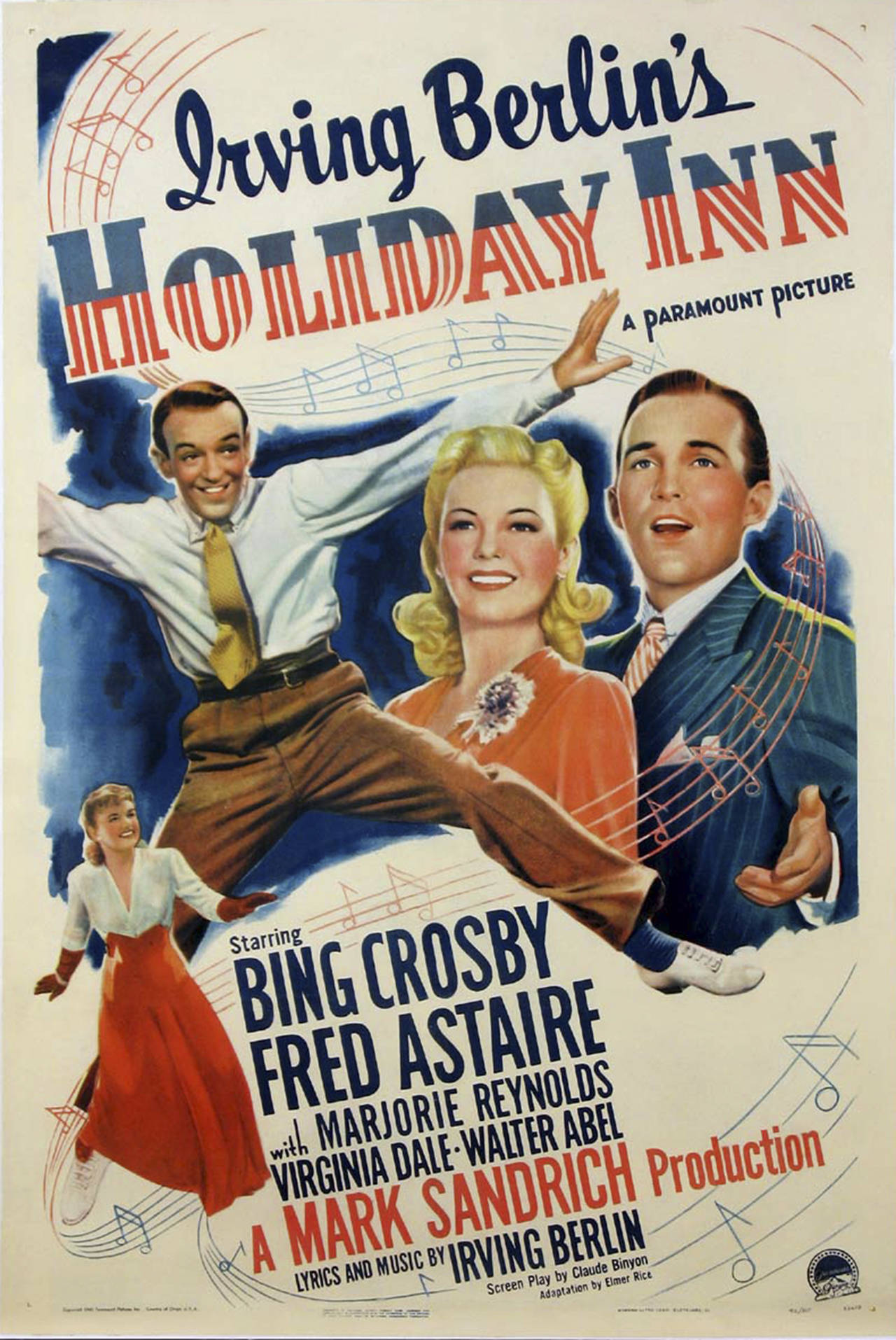Although the plots are not especially similar, the 1942 musical “Holiday Inn” has always been inextricably linked to the better-known 1954 holiday classic “White Christmas.”
Both movies star Bing Crosby and feature the music of Irving Berlin. Each has a show-business setting.
While Berlin’s holiday standard “White Christmas” provided the title for the later film, it was actually introduced — by Crosby, of course — in “Holiday Inn.” In the original version, the Washington-born crooner accompanies himself in part by tapping his ever-present pipe on nearby Christmas tree ornaments.
That film, which pairs musical heavyweights Crosby and Fred Astaire, will be shown Saturday and Sunday at Hoquiam’s 7th Street Theatre as part of its Silver Screen Classics series.
Berlin himself suggested the entertaining if less-than-credible story for “Holiday Inn.”
Crosby plays singer Jim Hardy, who forms a popular New York nightclub act with dancers Ted Hanover (Astaire) and Lila Dixon (Virginia Dale). Jim plans to marry Lila, but she instead runs off with Ted.
With the act dissolved, the dejected Jim decides to operate a farm in Connecticut. But he keeps his hand in show business by staging holidays-only live entertainment in the farmhouse.
Since Jim and his live-in housekeeper occupy literally the only rooms at the inn, and he isn’t scrimping on set designs or hiring a band, it seems unlikely he could make a financial go of this venture. Nevertheless, the concept attracts the attention of aspiring singer-dancer Linda Mason (played by Marjorie Reynolds), who works in a New York flower shop but also assists Jim with the shows.
Inevitably, the two fall in love. Their romance, however, is complicated by the return of Ted — who, having also been dumped by Lila, now sets his sights on Linda.
If the plot is unabashedly escapist, the music is timeless. In addition to “White Christmas,” the score includes such standards as “Easter Parade” and “Happy Holiday,” in addition to an explosive dance number called “Let’s Say It With Firecrackers,” in which Astaire uses fireworks as a prop.
The film’s success provided a couple of historical footnotes.
With Crosby’s recorded version en route to selling some 50 million copies, “White Christmas” was such a slam-dunk for the Best Song Academy Award that Berlin was allowed to present the Oscar (apparently without protest) to himself. And the film inspired the formation of the Holiday Inn hotel chain, although its executives wisely rejected Jim Hardy’s business model.
Although the movie “White Christmas” was the bigger box-office hit, most critics prefer “Holiday Inn.” In his review of the former film, film historian Leonard Maltin called it “a partial reworking of ‘Holiday Inn,’ not half as good.”
I disagree with that assessment. To my mind, the films are almost equal in quality.
In “Holiday Inn,” Crosby was at the peak of his career as both a singer and leading man. Astaire is a far more dynamic musical performer than was Danny Kaye in “White Christmas.” The earlier film has a more streamlined (it is some 20 minutes shorter) and less sentimental plot.
But, filmed in wide-screen color, “White Christmas” is more visually appealing. And its female leads, Rosemary Clooney and Vera-Ellen, are much stronger than Reynolds and Dale.
“Holiday Inn” is also dated in a couple of places — most notably in a Lincoln’s Birthday number performed by Crosby and Reynolds in blackface. While that would be considered racially insensitive in today’s films, it was a relatively common practice in musicals of the 1940s.
The bottom line, however, is that people who like “White Christmas” will also enjoy “Holiday Inn.” There’s just something about Crosby singing “White Christmas,” with or without the pipe, that makes the holidays seem merry and bright.



